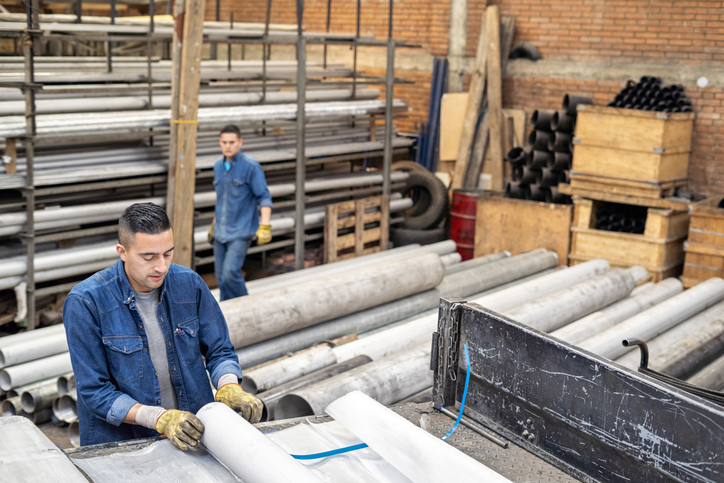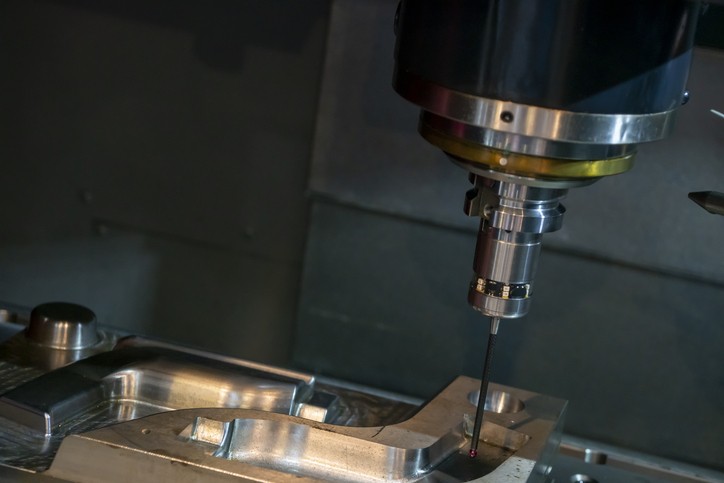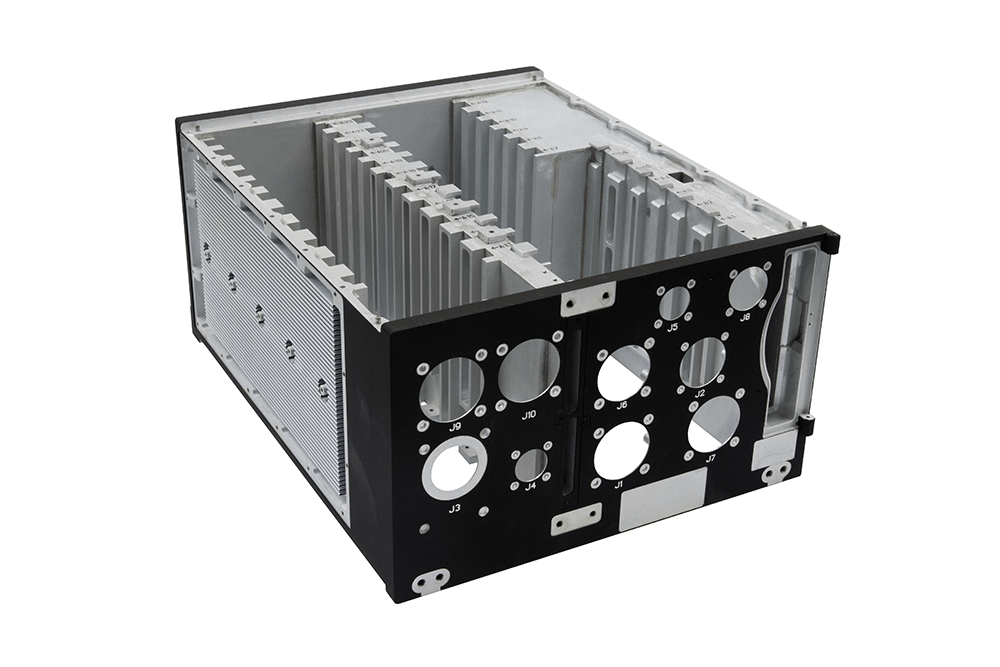Aluminum is widely used in aerospace applications as well as in construction and throughout a range of other industries. Aluminum’s lightweight and corrosion-resistant properties make it an ideal candidate for use in everything from fuselages to small, intricately machined, delicate parts. Being a widely used metal in manufacturing across so many sectors, novel advances in machining technology have emerged to meet the many needs for machined aluminum.
Some novel technologies that have enabled greater aluminum machining capabilities over the years include cutting lasers with greater power capabilities and more focused beams, optimized alloys, and multi-axis milling techniques allowing for more complex milling. We’ll discuss some challenges in machining aluminum, as well as some innovations that have made it possible to machine even highly complex aluminum parts in a safe and cost-effective manner.
Challenges in Aluminum Machining
Aluminum is a widely used metal in manufacturing, and many challenges have been encountered and overcome through innovation over time. These include the material properties of aluminum, such as its softness and relatively low melting point (higher than that of pure iron, but much lower than that of most steel, for instance) and challenges associated with machining any type of metal, such as finding ways to efficiently machine increasingly complex parts.
Inherent Properties
Aluminum is excellent for applications where being lightweight and corrosion resistant is important–and with a low density, and since it can be machined quickly and chips easily, it’s often considered straightforward to machine. However, the metal’s inherent physical properties can also make it challenging to work with in other areas. Machining aluminum is known to present some consistent challenges due to how soft it is and how easy it is to melt. Various aluminum alloys have been developed with improved machinable properties–increased hardness and higher melting points, and advanced machining techniques and machining tools have been developed to meet these challenges.
Complexity of Parts
Machining complex parts can present a challenge when working with any metal alloy, and aluminum alloys are no exception. Traditional 3-axis milling, while effective for many designs, can fall short when it comes to machining particularly complex parts, especially ones that require boring or drilling from multiple axes.
As newly developed technologies in everything from aerospace manufacturing to automotive manufacturing have emerged, the need for increasingly complex parts remains widespread, and machining technologies must keep pace to meet the demand. To machine complex parts as efficiently and effectively as possible, technologies such as laser cutting and multi-axis milling enable the efficient production of complex parts.
Meeting Challenges Through Innovation
Though the need for machined aluminum is continually evolving, so are the techniques used to manufacture necessary parts. Advanced techniques such as multi-axis milling and laser cutting, paired with advances in digital technology that translate to a less frequent need for human intervention, have resulted in increased cost-effectiveness and manufacturing capabilities.
Multi-Axis Milling
While traditional 3-axis milling is commonly used to manufacture aluminum parts, particularly complex parts can be more cost-effective to be manufactured using multi-axis mills. With a 3-axis mill, the spindle is allowed 3 axes of movement, allowing the material to be removed relative to a single plane. To remove material relative to another plane, the part must be set up again. Even then, 3-axis milling can only create angled features with atypical mounting and lots of human intervention–if at all.
Conversely, introducing additional axes to the milling process enables the manufacture of increasingly complex parts. With a 4-axis mill, rotation is added to the mounting, enabling much more complex parts to be milled without the need for remounting. With a 5-axis mill, rotation is added to an additional axis so that it can rotate along 2 axes, sometimes simultaneously. With 5-axis milling, even very complex shapes can be achieved, expanding the potential capabilities of machined aluminum significantly.
4 and 5-axis mills offer superior ability to create intricate shapes and complex parts. To manufacture complex fully 3-dimensional parts using 3-axis milling machines, human intervention, and multiple setups are required. Multi-axis mills, such as 4-axis and 5-axis mills, can easily be used to create even very complex 3-dimensional designs into reality without the need for human intervention. Not only reducing the chances of human error and increasing their safety, but making them far more cost-effective for this type of manufacturing.
Laser Cutting
Laser cutting, as a commercial method for cutting metals, was first introduced in the 1960s. Though, at that time, the applications were limited due to technological limitations, laser cutting has come a long way since its advent. At one time, laser cutting aluminum was very difficult due to aluminum’s ability to quickly dissipate heat, which made the cutting process less efficient, and aluminum’s reflectivity, which made using lasers less viable.
However, laser cutting technology has made significant strides over the years, and new fiber lasers can focus light beams over much smaller spaces than their CO2 laser counterparts can. This makes them ideal for use with highly reflective materials such as aluminum. Lasers have grown more powerful over the years, allowing them to overcome power limitations and cut through increasingly thick pieces of metal. Laser cutting aluminum can now be a highly cost-effective–and quick–practice that results in little waste, fast turnaround time, and clean cuts.
The Bottom Line of Aluminum Machining Trends
Aluminum, being one of the most widely used metals on earth for everything from food processing to construction and aerospace engineering, is a highly useful metal. Aluminum machining techniques and technologies have kept pace with ever-evolving needs for complex aluminum parts across a wide range of industries over time. Some of the novel technologies that allow us to manufacture high-quality parts in a cost-effective manner include advanced laser cutting technology and multi-axis milling.
Key Takeaways:
- Advanced aluminum machining now utilizes multi-axis milling and fiber laser cutting to overcome traditional challenges like aluminum’s softness and reflectivity, enabling rapid machining of complex parts.
- Modern laser cutting technology has evolved significantly since the 1960s, with new fiber lasers able to focus beams over smaller spaces and cut through increasingly thick aluminum pieces efficiently.
- 5-axis milling capabilities allow manufacturers to create complex 3-dimensional aluminum parts without human intervention or multiple setups, making military fabrication and aerospace applications more cost-effective.
Transform Your Aluminum Manufacturing with Advanced Machining
Stay ahead of industry demands with cutting-edge aluminum machining technologies. From complex aerospace components to precision military fabrication, our advanced multi-axis milling and fiber laser cutting capabilities deliver the rapid machining solutions your projects require.



